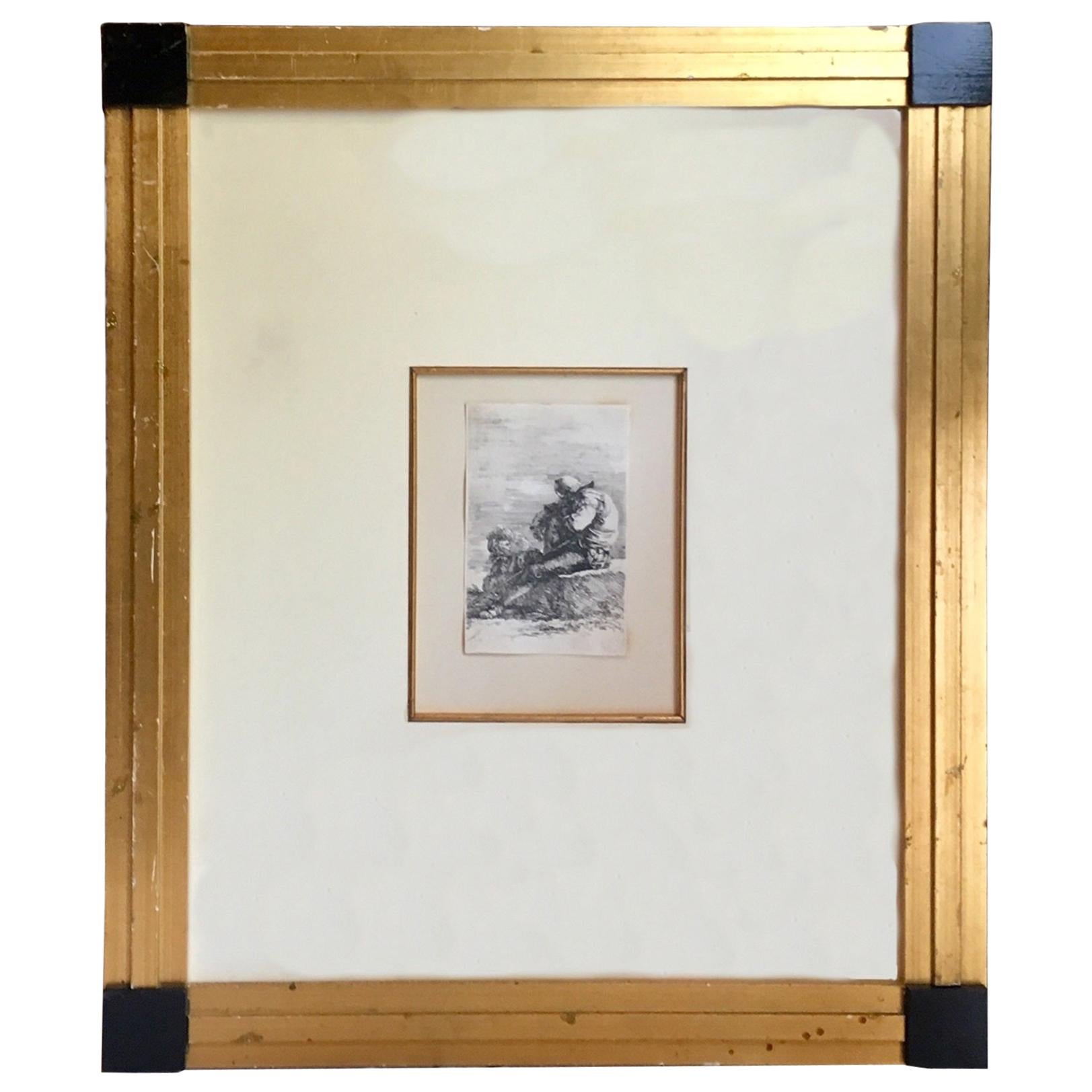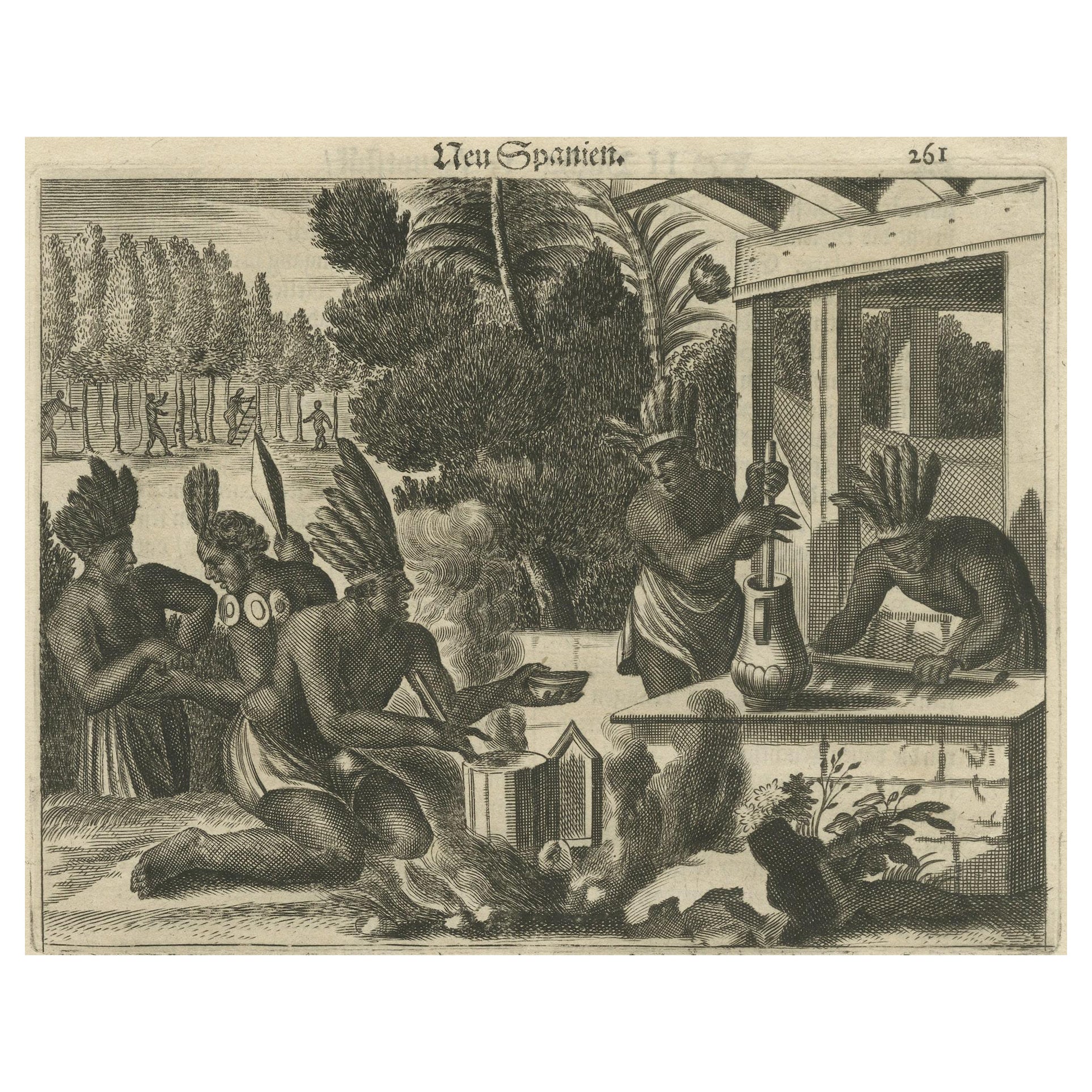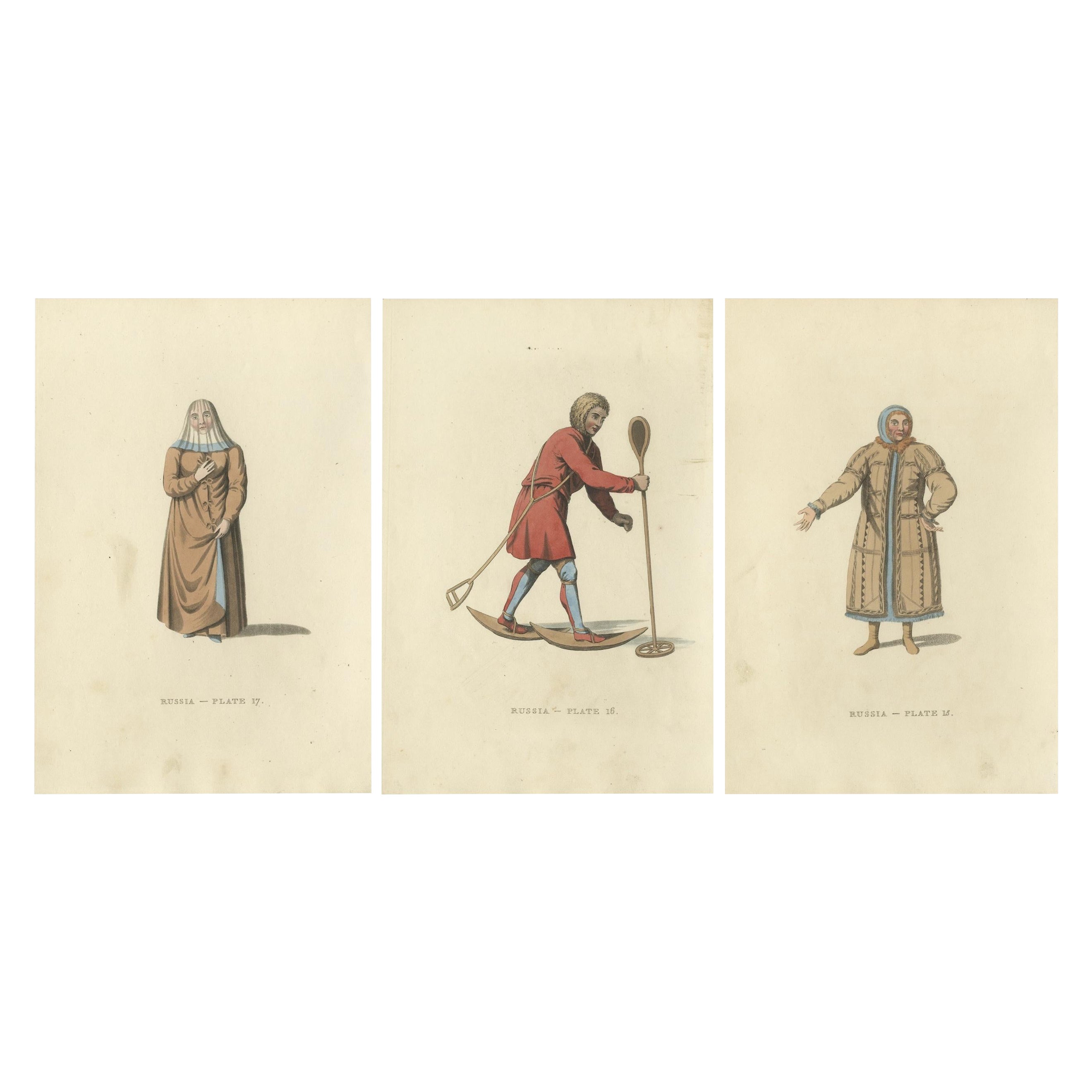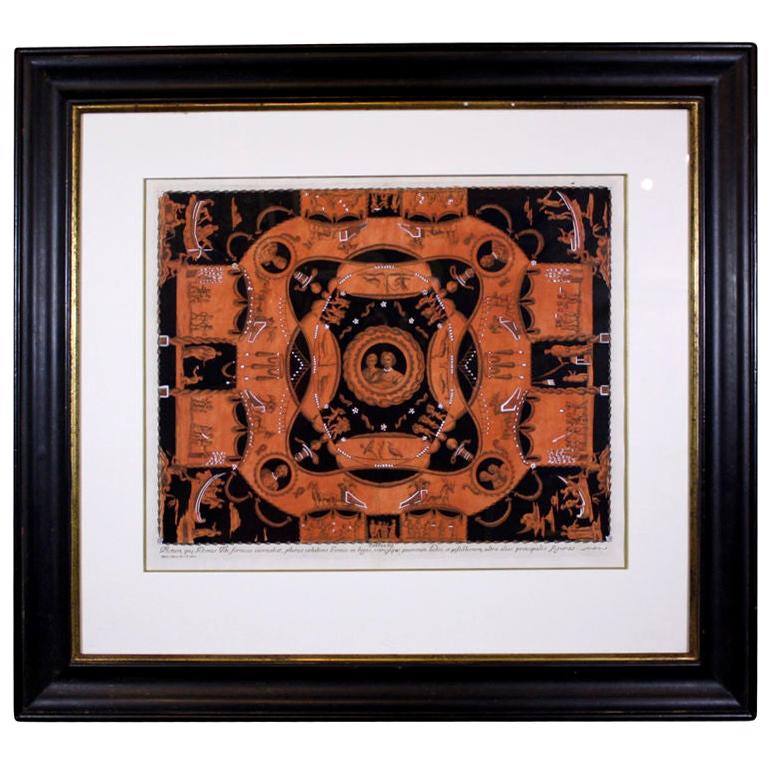Items Similar to Scenes from 17th Century Chile: A Glimpse of Early Indigenous Cultures, 1673
Want more images or videos?
Request additional images or videos from the seller
1 of 6
Scenes from 17th Century Chile: A Glimpse of Early Indigenous Cultures, 1673
About the Item
The image is a historical copper engraving from 1673, taken from the German edition of Arnoldus Montanus' work, which is known for its depiction of the Americas and the Southern lands. It illustrates the cultural diversity of the New World with a series of figures in various attire, representing the indigenous peoples and possibly early European settlers or explorers.
The background shows a landscape that could be indicative of the natural environment of the region at that time. The attire of the figures and the items they carry or wear would be of particular interest to historians, as these details provide insights into the daily lives, social structures, and economies of the depicted cultures.
The title of this original copper engraving, which indicates that these individuals are from Chile (referred to as "Chili" in the text), suggests that it is intended to depict scenes from that specific region of South America. The engraving is likely to illustrate the attire, customs, and daily activities of the indigenous peoples of Chile and possibly interactions with European explorers or settlers, typical of the period it was created.
The detailed attire and objects carried by the figures would be reflective of the cultural practices and the environment of Chile in the 17th century. The text accompanying the image would typically provide further explanation and context, enhancing the viewer's understanding of the depicted scene and its cultural significance.
Condition Report: The print is a fine example of 17th-century copperplate engraving, published by Jacob Meurs in Amsterdam in 1673. Considering its age, the page appears to be in good condition. It has some signs of aging such as foxing, discoloration, or edge wear or loss typical of paper artifacts of this period. The integrity of the image and text seems to be intact, with no significant tears or losses to the central depiction, making it a valuable piece for collectors of early American historical prints.
- Dimensions:Height: 12.21 in (31 cm)Width: 7.49 in (19 cm)Depth: 0 in (0.02 mm)
- Materials and Techniques:Paper,Engraved
- Period:1670-1679
- Date of Manufacture:1673
- Condition:Expected age-related tonality changes and potential marginal foxing. The paper shows signs of handling, such as soft creases and wear along left edge. Please study the image carefully.
- Seller Location:Langweer, NL
- Reference Number:
About the Seller
5.0
Platinum Seller
These expertly vetted sellers are 1stDibs' most experienced sellers and are rated highest by our customers.
Established in 2009
1stDibs seller since 2017
1,933 sales on 1stDibs
Typical response time: <1 hour
- ShippingRetrieving quote...Ships From: Langweer, Netherlands
- Return PolicyA return for this item may be initiated within 14 days of delivery.
More From This SellerView All
- Copper Engraving of Daily Life in New Spain in The 17th Century, 1673Located in Langweer, NLThis original copper engraving depicts a lively scene of daily life in New Spain from Arnoldus Montanus' "Die Unbekannte Neue Welt oder Beschreibung des Welt-teils Amerika und des Su...Category
Antique 1670s Prints
MaterialsPaper
- Traditional Attire of the Ostiak: A Glimpse into 19th Century Siberian CultureLocated in Langweer, NLThese original antique images are hand-colored and from the publication "Picturesque Representations of the Dress and Manners of the Russians," which includes sixty-four colored engr...Category
Antique 1810s Prints
MaterialsPaper
- Copper Engraving of Hispaniola - Indigenous Life in America by Montanus, 1673Located in Langweer, NLThis original copper engraving, extracted from the scarce German edition of Arnoldus Montanus' "Die Unbekante Neue Welt oder Beschreibung des Welt-teils Amerika und des Sud-Landes", ...Category
Antique 1670s Prints
MaterialsPaper
- "Warrior of Timor: A Handcolored Glimpse into Indonesian Culture, 1845Located in Langweer, NLThis antique print, titled 'Guerrier de Timor (Amfoang),' provides a vivid portrayal of an Atoni warrior from Kupang, West Timor, Indonesia. The hand-colored woodcut captures intrica...Category
Antique Mid-19th Century Prints
MaterialsPaper
- Pl. 101 Antique Print of French 17th Century Scenes by Racinet, circa 1880Located in Langweer, NLAntique print titled 'France XVIIth Cent - France XVIIe, Siecle - Frankreich XVIItes Jahr'. Chromolithograph of French 17th century scenes. This print originates from 'Le Costume His...Category
Antique Late 19th Century Prints
MaterialsPaper
- Copper Engraving of Conquest and Culture in New Spain by Montanus, 1673Located in Langweer, NLThis evocative original copper engraving, featured in Arnoldus Montanus' "Die Unbekannte Neue Welt oder Beschreibung des Welt-teils Amerika und des Sud-Landes," presents a scene from...Category
Antique 1670s Prints
MaterialsPaper
You May Also Like
- Fine 17th Century Italian Etching by Salvator Rosa, 1615-1673By Salvator RosaLocated in Vero Beach, FLSalvator Rosa, the Italian Baroque painter was also a significant etcher and printmaker. Rosa’s is series of small prints of soldiers was very popular and influential. This etching i...Category
Antique 17th Century Italian Baroque Prints
MaterialsPaper
- 17th Century Hand-Colored Engraving of Scenes of Roman Life by Pietro BartoliBy Pietro Santo BartoliLocated in Pembroke, MAA large, nicely-framed Italian hand-colored engraving in tones of terracotta and black. The engraving depicts various figures and scenes from the house of Titus, including angels in chariots bringing love and prosperity, boys playing childhood games, fishing, and other elements of Roman life (17th century, with more recent matte and frame). Engraving is captioned in Latin: "Pictura qua Domus Titi fornices exornabat, plures exhibens Genios in bigis, variosque puerorum ludos, et piscationem, ultra alias principales figuras." "Petrus Sancte Bartoli delin." Pietro Santo...Category
Antique Late 17th Century Italian Baroque Prints
MaterialsPaper, Paint, Wood
- Gerard Ter Borch Genre Scene "The Two Drinkers" Engraving 17th CenturyBy Gerard ter Borch the YoungerLocated in Beuzevillette, FRHumorous engraving typical of Flemish representations of the 17th century, representing two seated drinkers . We can see a woman with a glass in her left hand and a carafe in her right, while a man who probably drunk sleeps on the table. Beautiful achievement typical of the Flemish school of the 17th century. Gerard ter Borch - or Terburg - also known as "the young man" was born in 1617 in Zwolle near Amsterdam and died in 1681 in Deventer. He worked as a genre painter and portraitist and was very active especially in Münster and Amsterdam. He discovered his talent for drawing at the age of eight and became a pupil of his father Gerard ter Borch, known as "the old man". The Dutch painter Hendrick Avercamp supported Terburg. He studied with Pieter de Molyn (Dutch painter, draughtsman, engraver and publisher) for three years (1632-1635). He travelled extensively between London, Germany, France and Italy. He in turn became the master of his pupil Caspar Netscher...Category
Antique 17th Century European Prints
MaterialsPaper
- 17th Century Lithograph Framed Map of SpainLocated in Atlanta, GAIn giltwood frame, dated 1652.Category
Antique 18th Century and Earlier Spanish Baroque Prints
MaterialsInk, Paper
- 17th Century Pair of Etchings by Theodoor Van Thunlden from Rubens, Antwerp 1642By Theodoor van Thulden, Peter Paul RubensLocated in Cagliari, IT"Arch dedicated to Hercules" and "Arch dedicated to Bellerophon" Splendid and very rare etchings belonging to a suite of subjects executed for the preparations of the "Celebrations for the entry into Antwerp of the Cardinal-Infante Ferdinando of Habsburg-Spain on 17 April 1635". The sketches for the decorations were all drawn by Sir Peter Paul Rubens and the execution of the etchings was entrusted to Van Thulden. Bottom left: P.P. Rubens. Bottom right: G. Gervatius (who was commissioned to bring together the illustrations of the arches in a special volume) and Van Thulden. Laid paper with watermark - copper imprint - margins - excellent condition. At the end of 1634 Peter Paul Rubens (1577-1640) was invited to make a series of drawings to decorate the city of Antwerp on the occasion of the solemn entry of the infant cardinal Ferdinand of Habsburg (1609-1641) who, after his death of Archduchess Isabella Clara Eugenia (1633), Spanish governor of the southern Netherlands, had been elected as his successor. Generally in these circumstances, the itinerary was articulated through a series of stations and the city - in its main urban hubs - was adorned with decorations and ephemeral apparatuses which, without solution of continuity, covered the facades of the palaces, churches and convents facing the parade axis of the celebratory itinerary, testifying to the participatory role of the various public and private institutions that took part in the feast1. As had happened for the entrances of Charles V in 1520, of Philip II in 1549 and of the archdukes Albert and Isabella in 1599, also in this case, on 17 April 1635, the most important streets and squares of Antwerp were enriched with arrangements: temporary altars, four scenarios, a portico and large triumphal arches built in wood, over twenty meters height, decorated with paintings, sculptures and allegorical scenes. The references to the ancient alluded in this case to the greatness of the Habsburgs and to the merits of Ferdinand for the victory obtained over the Protestant armies of Sweden and their German allies. The choice to use the triumphal arch has its roots in the "city of the popes" and must be read as a connection with the triumphal and modern arches, with Rome and with the "possession" ceremony, placing the emphasis on its centuries-old use . In the elaboration of the drawings and sketches Rubens proved to be a true connoisseur of architecture, but what is most surprising about the artist is the casual use of architectural language and fidelity to sixteenth-century Roman models. In order for the memory of these works to be perpetuated over time, some artists were commissioned to etch the ephemeral apparatuses and, under the guidance of the painter Theodor van Thulden...Category
Antique 17th Century Belgian Baroque Prints
MaterialsPaper
- 17th Century Francesco Curti "Vendor of Shoes" EtchingBy Giuseppe Maria Mitelli, Francesco CurtiLocated in Cagliari, ITThe print is part of the series consisting of forty engravings, "I mestieri per la via" (The crafts on the road), engraved by Francesco Curti (Bologna ca.1603- Bologna 1670) by an in...Category
Antique 1660s Italian Prints
MaterialsCopper





